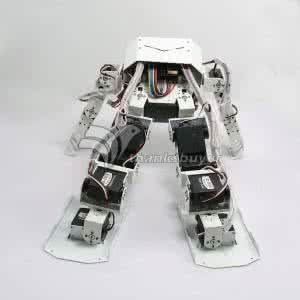(Simplified Abstract) To accomplish breakthroughs in dynamic whole-body locomotion, legged robots have to be terrain aware. Terrain-Aware Locomotion (TAL) implies that the robot can perceive the terrain with its sensors, and can take decisions based on this information. This thesis presents TAL strategies both from a proprioceptive and an exteroceptive perspective. The strategies are implemented at the level of locomotion planning, control, and state estimation, and using optimization and learning techniques. The first part is on TAL strategies at the Whole-Body Control (WBC) level. We introduce a passive WBC (pWBC) framework that allows the robot to stabilize and walk over challenging terrain while taking into account the terrain geometry (inclination) and friction properties. The pWBC relies on rigid contact assumptions which makes it suitable only for stiff terrain. As a consequence, we introduce Soft Terrain Adaptation aNd Compliance Estimation (STANCE) which is a soft terrain adaptation algorithm that generalizes beyond rigid terrain. The second part of the thesis focuses on vision-based TAL strategies. We present Vision-Based Terrain-Aware Locomotion (ViTAL) which is an online planning strategy that selects the footholds based on the robot capabilities, and the robot pose that maximizes the chances of the robot succeeding in reaching these footholds. ViTAL relies on a set of robot skills that characterizes the capabilities of the robot and its legs. The skills include the robot's ability to assess the terrain's geometry, avoid leg collisions, and avoid reaching kinematic limits. Our strategies are based on optimization and learning methods and are validated on HyQ and HyQReal in simulation and experiment. We show that with the help of these strategies, we can push dynamic legged robots one step closer to being fully autonomous and terrain aware.
翻译:(简化摘要) 要在动态的全体滚动中实现突破, 腿部机器人必须具备地形意识。 Terrain- Aware Locomotion (TAL) 意味着机器人能够用传感器对地形进行感知, 并且能够根据这些信息做出决策。 此论文展示了TAL 策略, 既有自动感知, 也有外向感。 这些策略是在移动规划、 控制和状态估计层面实施的, 并使用优化和学习技术。 第一部分是在全体控制(WBC) 层面的TAL 策略上。 我们引入了被动的 WBC (PWBC) 速度框架, 使得机器人能够用传感器感知力来稳定并穿越具有挑战性的地形, 同时考虑到地形测量( Inclination) 和摩擦特性。 PWBC 依靠僵硬的接触假设, 这使得它只适合坚硬的地形。 因此, 我们可以引入 Soft Terrain 适应 Nd Conforation Estimation (ST) 步骤, 是一种软地形适应算算法,, 并且我们一般地表化地表。 我们的脚部的脚部的脚部的脚部战略将它能定位定位和脚部的脚部定位定位定位和脚部的脚部都能够学习。




